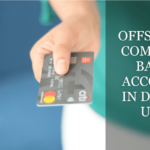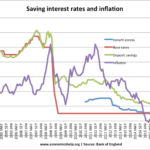US Offshore Bank Account: Navigating the complexities of offshore banking can feel daunting, but understanding the benefits, regulations, and potential pitfalls is crucial for US citizens considering this option. This guide unravels the intricacies of establishing and managing a US offshore bank account, providing a clear roadmap through the legal, financial, and logistical considerations involved. We’ll explore various account types, suitable jurisdictions, tax implications, and risk mitigation strategies, equipping you with the knowledge to make informed decisions.
From understanding the advantages of diversifying your assets internationally to navigating the intricacies of the Foreign Bank Account Report (FBAR) and Foreign Account Tax Compliance Act (FATCA), we’ll demystify the process. We’ll compare different offshore banking jurisdictions, analyze their respective tax implications for US residents, and highlight common misconceptions. This in-depth analysis will empower you to confidently approach the world of offshore banking.
Types of Offshore Bank Accounts
Offshore banking offers a diverse range of account types catering to various financial needs and investment strategies. Understanding the differences between these accounts is crucial for selecting the most suitable option based on individual circumstances and financial goals. This section details the common types of offshore accounts, highlighting their features, associated fees, and the documentation required for account opening.
Offshore Savings Accounts
Offshore savings accounts function similarly to domestic savings accounts, offering a secure place to deposit funds and earn interest. However, interest rates and taxation policies can differ significantly depending on the jurisdiction. These accounts generally offer limited transaction capabilities compared to checking accounts, prioritizing capital preservation and interest accrual. Opening an offshore savings account typically requires providing identification documents (passport, driver’s license), proof of address, and potentially a source of funds declaration.
Fees vary considerably between banks and jurisdictions, encompassing monthly maintenance fees, minimum balance requirements, and potential charges for exceeding transaction limits.
Offshore Checking Accounts
Offshore checking accounts provide more transactional flexibility than savings accounts, allowing for regular deposits, withdrawals, and debit card usage. These accounts are often used for managing day-to-day expenses or facilitating international business transactions. The documentation needed to open an offshore checking account mirrors that of a savings account, but may require additional information related to business activities if the account is for commercial purposes.
Fees associated with offshore checking accounts can include monthly maintenance fees, transaction fees, and potential charges for exceeding overdraft limits.
Offshore Investment Accounts
Offshore investment accounts offer a platform for investing in various financial instruments, including stocks, bonds, mutual funds, and other assets. These accounts are typically managed by professional investment advisors and offer a higher degree of sophistication than savings or checking accounts. Opening an offshore investment account often necessitates a more rigorous due diligence process, requiring detailed financial information, investment experience declarations, and potentially risk tolerance assessments.
Fees associated with offshore investment accounts are more complex, including account management fees, transaction fees, and potentially performance-based fees.
Comparison of Offshore Account Types
| Account Type | Features | Fees | Required Documentation |
|---|---|---|---|
| Savings Account | High-interest rates (potentially), security, limited transactions | Monthly maintenance fees, minimum balance fees, transaction fees (potentially) | Passport/ID, proof of address, source of funds declaration |
| Checking Account | Debit card access, frequent transactions, international payments | Monthly maintenance fees, transaction fees, overdraft fees (potentially) | Passport/ID, proof of address, source of funds declaration, potentially business registration documents |
| Investment Account | Access to diverse investment options, professional management (potentially), higher potential returns | Account management fees, transaction fees, performance-based fees (potentially) | Passport/ID, proof of address, source of funds declaration, financial statements, investment experience details, risk tolerance questionnaire |
Choosing the Right Jurisdiction: Us Offshore Bank Account

Selecting the appropriate offshore banking jurisdiction is crucial for maximizing the benefits and minimizing potential risks associated with holding assets outside the United States. This decision requires careful consideration of several interconnected factors, impacting both the legal and financial aspects of your offshore banking strategy. A thorough understanding of these factors is essential for making an informed choice.
Factors Influencing Jurisdiction Selection
The selection of an offshore banking jurisdiction involves a multifaceted evaluation process. Key considerations include the jurisdiction’s tax laws, political and economic stability, banking regulations, and the overall reputation of its financial institutions. Tax laws, for instance, dictate the extent to which your offshore accounts are subject to taxation in both the US and the chosen jurisdiction. Political stability ensures the safety and security of your assets, while robust banking regulations offer protection against fraud and mismanagement.
Finally, the reputation of the jurisdiction and its banks is paramount in ensuring the trustworthiness and reliability of your chosen financial institution.
Evaluating the Reputation and Trustworthiness of Offshore Banks, Us Offshore Bank Account
Assessing the reputation and trustworthiness of an offshore bank demands a rigorous approach. This involves examining the bank’s regulatory compliance history, its financial strength and stability (as evidenced by its capital adequacy ratio and credit ratings), and the availability of independent audits and transparency reports. Looking for banks with a long operational history and a proven track record of secure asset management is also essential.
Additionally, investigating the bank’s client service reputation and its adherence to international best practices in anti-money laundering (AML) and know-your-customer (KYC) regulations is critical. The presence of a robust dispute resolution mechanism is also a key indicator of a reputable institution.
Popular Jurisdictions for US Citizens
Several jurisdictions have gained popularity among US citizens seeking offshore banking solutions. These include the British Virgin Islands (BVI), the Cayman Islands, and Switzerland. The BVI offers a stable political environment and a well-established legal framework for offshore banking, although its tax advantages have been somewhat diminished by recent international tax agreements. The Cayman Islands boasts a sophisticated financial sector and a robust regulatory environment, but it is subject to increased scrutiny from international organizations.
Switzerland, known for its banking secrecy, offers a high degree of privacy and asset protection, but its regulations are increasingly stringent and its tax laws have undergone significant changes.
Jurisdictional Comparison: Pros and Cons
Understanding the specific advantages and disadvantages of different jurisdictions is critical for informed decision-making. The following table provides a comparative overview of three popular choices.
| Jurisdiction | Pros | Cons |
|---|---|---|
| British Virgin Islands (BVI) |
|
|
| Cayman Islands |
|
|
| Switzerland |
|
|
Illustrative Example: Account Management

Managing an offshore bank account involves several key processes, including online access, fund transfers, and currency conversions. Understanding these processes is crucial for efficient and secure account management. This example demonstrates a typical workflow using a hypothetical online platform.The process of managing your offshore account typically begins with accessing your online banking portal. This is often achieved through a secure website or a dedicated mobile application, both requiring strong password authentication and potentially multi-factor authentication for enhanced security.
Online Banking Interface
Imagine logging into “GlobalSecureBank,” our hypothetical offshore banking platform. The homepage presents a clean, intuitive interface. A personalized dashboard displays your account balances in multiple currencies (USD, EUR, GBP, etc.), recent transactions, and upcoming payments. Clearly labeled menu options provide access to account statements, transaction history, and various account management tools. The design prioritizes ease of navigation and security, with clear visual cues and intuitive icons.
Account details are presented concisely, with prominent display of key figures like available balance and pending transactions. The platform supports multiple languages, allowing for international accessibility. Security features include session timeouts, suspicious activity alerts, and a dedicated customer support section readily available through a chat function or email.
Wire Transfers
Initiating a wire transfer involves navigating to the “Transfers” section. The interface guides you through a step-by-step process, requiring you to specify the recipient’s bank details (name, account number, SWIFT code, and address), the transfer amount, and the currency. The platform provides real-time exchange rate information, allowing you to see the equivalent amount in the recipient’s currency before confirming the transfer.
A confirmation screen displays a summary of the transfer details, including fees and estimated arrival time. Once confirmed, the transfer is processed securely and you receive a transaction reference number for tracking purposes. The system incorporates robust security measures to prevent fraudulent transfers, such as two-factor authentication for high-value transactions.
Currency Exchange
GlobalSecureBank’s platform simplifies currency exchange. A dedicated section allows you to convert funds between different currencies held in your account. The system displays the current exchange rate, including any applicable fees. You can specify the amount to be converted and the target currency. The platform provides a clear breakdown of the transaction, showing the amount you’re exchanging, the exchange rate used, and any fees involved.
After confirming the conversion, the funds are exchanged and updated in your account balance within a short timeframe. The platform allows for setting up recurring currency conversions, facilitating regular payments or investments in different currencies. The exchange rates are updated frequently to reflect real-time market fluctuations, ensuring transparency and accuracy.
Opening a US offshore bank account requires careful planning and a thorough understanding of the legal and financial landscape. While offering potential benefits like asset protection and diversification, it’s crucial to prioritize compliance with US tax laws and regulations. By carefully weighing the advantages and disadvantages, selecting a reputable jurisdiction, and implementing robust risk mitigation strategies, US citizens can navigate the complexities of offshore banking and leverage its potential benefits responsibly.
Remember, seeking professional advice from financial and legal experts is crucial before making any decisions.

